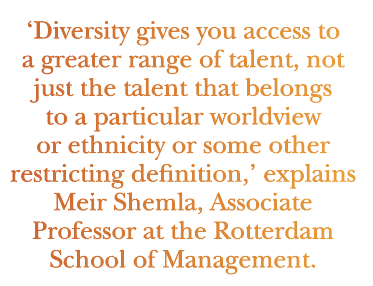By Viqui Dill | STC Associate Fellow
In this issue, we’re talking about Inclusivity. STC is striving to be a more diverse, equitable, and inclusive organization. But what can members do to be better allies of people in underserved groups? There are a number of good ways you can become a better ally. One way is to educate ourselves.
Because my son is on the autism spectrum, I have a special place in my heart for neurodiversity. Neurodiversity is a concept where neurological differences are to be recognized and respected as any other human variation. These differences can include those labeled with dyspraxia, dyslexia, attention deficit hyperactivity disorder, autistic spectrum, Tourette syndrome, and others. Neuro-differences are recognized and appreciated as a social category on par with ethnicity, sexual orientation, gender, or disability status.
I’m sharing my story because I truly believe that allyship is a growing process. We don’t start as allies. When we know better, we can do better. Here is one look at allyship through the lens of my experience with my neurodiverse son.
 Understanding the Needs of a Neurodiverse Child
Understanding the Needs of a Neurodiverse Child
When my son was first diagnosed with autism, I remember thinking of the condition as my greatest enemy. I devoted every waking moment to combatting and conquering it, shedding tears, saying prayers, and spending my retirement savings on therapies and treatments—not to change who Jim was, but to give him the best possible tools for long-term success.
As you might imagine, it’s not easy to be a neurodiverse child. I’ll let Jim explain it in his own words: “Children can pick up upon cues that indicate who is not quite right. There were two kids in particular who loved bullying me. Their love of tormenting me started small but got worse every year. And of course, everyone faces school yard bullies. Faced with tormenters both in school and out of it, I became withdrawn. I had fewer friends as time went on.”
Now, let me explain that I am glad that we did invest so much time, energy, and money in the interventions that allowed our son to get along in a neurotypical world. We began with weekly speech therapy that improved his verbal skills and reduced emotional outbursts when he couldn’t make himself understood. We took occupational therapy to help him find satisfying ways to get proprioceptive stimulation, eliminating the hand flapping that made him look strange. We experimented with a controversial allergy treatment that improved his behavior by improving how he felt inside. We invested in another controversial treatment that adjusted his overly sensitive hearing that allowed him to start using his hearing normally and be more in tune with the world around him. We homeschooled throughout all of middle school, breaking the cycle of fight or flight that had plagued his previous school years. All of these interventions brought him closer to our world and helped him enjoy being a part of it.
Neurodiversity in Adults
Now that my son is an adult, I see autism as just another characteristic that makes Jim uniquely Jim. Like his thick curly hair and his deep baritone voice, Jim owns his autism and uses it to his advantage. I have learned to appreciate the neurodiversity in our home.
Some of the autistic characteristics have turned out to be assets. Jim has an ability to concentrate and focus that is unmatched. This comes in handy in a musical home and he is able to go about his business despite the loud rehearsal that is happening in the basement. Jim sees it differently. “My mother seems to think that what I have is some kind of superpower, that it grants me talents normal people do not have. But my talents are not unique to my condition.”
The social detachment that comes with autism keeps Jim’s life drama free. He never gets in a twist about what someone says or what someone thinks about him. He just lets it go in a way we all wish we could.
And best of all, the repetitive behaviors that doctors label “perseveration” make Jim a fantastic percussionist. Jim picked up his drumming technique in a single lesson back in 2004 and has been drumming with our family band ever since. He is able to make the same repetitive motions for hours during a gig, singing at the same time, without skipping a beat or varying tempo. He is also a strong rhythm guitar player for the same reason.
Our family band, The Dill Pickers, played at #STC20 and will be performing at some of the regional conferences as well. Come sing and dance along and say hi to our neurodiverse family. Links to our performance videos are available in the references.
Neurodiversity and Employment
Neurodiversity is starting to be recognized as a competitive advantage. In a 2017 article in the Harvard Business Review, Robert D. Austin and Gary P. Paisano point out that “A growing number of prominent companies have reformed their HR processes in order to access neurodiverse talent.” These companies include SAP, Hewlett Packard Enterprise (HPE), Microsoft, Willis Towers Watson, Ford, and EY.
Why? Austin and Paisano say that neurodiverse hires bring new perspectives:
“At HPE, neurodiverse software testers observed that one client’s projects always seemed to go into crisis mode before a launch. Intolerant of disorder, they strenuously questioned the company’s apparent acceptance of the chaos. This led the client company to realize that it had indeed become too tolerant of these crises and, with the help of the testers, to successfully redesign the launch process. At SAP, a neurodiverse customer-support analyst spotted an opportunity to let customers help solve a common problem themselves; thousands of them subsequently used the resources he created.”
It’s not surprising, then, that the tech sector is where many of the hiring initiatives exist. Many people with autism thrive in professions like coding, programming, software testing, and analytics—professions that benefit from the ability to concentrate and focus.
But of course, those skills are useful in other industries, as David Kearon, the Director of Adult Services with Autism Speaks notes in a 2020 article on WorkingNation.com: “The reasons why tech environments seem like such a good fit for people with autism—they tend to be predictable, systematic, and rule-based—also apply to many other occupations as well.”
Austin and Paisano report that SAP—the organization with the oldest program for neurodiversity—has seen productivity gains, quality improvement, increases in innovation, and improvements in employee engagement. HPE South Pacific, an organization with one of the largest neurodiversity programs, sees significant benefits from neurodiverse hires. No other initiative delivers benefits at so many levels, according to Nick Wilson, managing director.
“Perhaps the most surprising benefit is that managers have begun thinking more deeply about leveraging the talents of all employees through greater sensitivity to individual needs,” observe Austin and Paisano.
As for Jim, he has a good job with full benefits as a government contractor at the U.S. Department of Agriculture’s Agricultural Research Service (ARS) in Kearneysville, West Virginia. The job is through NW Works, our local 501(c)(3) non-profit that bridges the employment gap for people with disabilities and others facing barriers to meaningful employment. Information for NW Works is available in the references.
Jim is thriving at his new job and blends in so well that his supervisor actually asked for a doctor’s note confirming his diagnosis.
“My autism is not a malady that is immediately obvious,” Jim explains. “But once you introduce yourself, you may notice that while I meet your smile with my own, while I reach out my hand to shake yours, you will notice something off, but you may not know what precisely that is. Maybe it’s the way my gaze almost, but not quite, meets yours, or that it meets it only briefly, then moves to something else. You are witnessing a mask of sanity, one built upon a decade of intensive therapy and lots of medications. It is a facade that almost resembles the psyche of a normal person. Almost…”
 Conclusion
Conclusion
Meaningful employment is so important and it’s great to see employers like the USDA making room for neurodiverse workers. My hope is that this trend continues, particularly as companies like SAP share their positive experiences with neurodiverse hiring.
“Diversity gives you access to a greater range of talent, not just the talent that belongs to a particular worldview or ethnicity or some other restricting definition,” explains Meir Shemla, Associate Professor at the Rotterdam School of Management in an article for Forbes. “It helps provide insight into the needs and motivations of all of your client or customer base, rather than just a small part of it. And, potentially, as McKinsey & Co. and a host of other highly credible researchers have shown, it makes your organization more effective, more successful, more profitable.”
We need to make room for a more diverse workforce. Having more voices and perspectives benefits everyone.

VIQUI DILL (viqui.dill@gmail.com) is a technical writer and editor for Huntington Ingalls Industries, living in Winchester, Virginia, and working in Kearneysville, West Virginia. She is passionate about continued education and lifelong learning for those in our field. Sharing the tips and tricks she has gathered in her 25 years as a writer, she is actively promoting networking with other writers to help us all learn and stay connected. Dill plays bass with STC’s own Rough Drafts band and her family band, The Dill Pickers, performed at the 2020 virtual STC Summit. Dill describes herself as a “technical writer, wife and mom, bass player, and worship leader. I’m happiest when folks sing along with me.”
REFERENCES
The Dill Pickers. 26 May 2020. “Dill Pickers are so happy to have been a part of the #STC20 Summit Honors celebration and after party.
Congratulations to all the honorees of the well-deserved awards. Many thanks to all my STC and the exchange friends who attended. Music starts about 52 minutes in.” [Facebook update]. Accessed 7 April 2021. https://www.facebook.com/Dill.Pickers/posts/10158112025049933.
NW Works. n.d. “Empowerment Through Employment.” Accessed 7 April 2021. https://nwworks.com/.
Pisano, Gary, P. May-June 2017. “Neurodiversity as a Competitive Advantage.” Harvard Business Review. Accessed 7 April. 2021.
https://hbr.org/2017/05/neurodiversity-as-a-competitive-advantage.
Schindelheim, Ramona.2020. “ Closing the Neurodiversity Gap in the Workplace.” WorkingNation. Accessed 7 April 2021.
https://workingnation.com/closing-the-neurodiversity-gap-in-the-workplace/.
Shemla, Meir. 2018. “Why Workplace Diversity is So Important, and Why It’s So Hard to Achieve.” Forbes. Accessed 7 April 2021.
https://www.forbes.com/sites/rsmdiscovery/2018/08/22/why-workplace-diversity-is-so-important-and-why-its-so-hard-to-achieve/?sh=4a5c35823096.
STC South Central Texas Chapter.n.d.” STC SoCenTx 2021 MiniConference.” Accessed 7 April 2021. https://stc-socentx.org/stc-socentx-2021-miniconference/.


